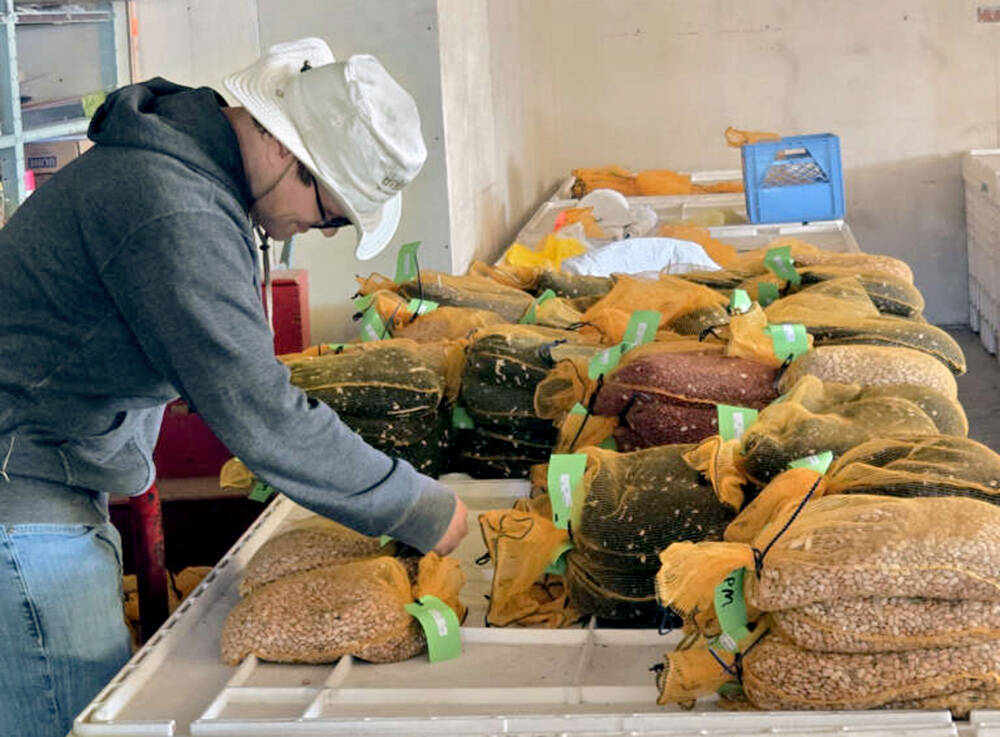Do you devote enough time to your winter wheat crop? Experts from the Ontario Ministry of Agriculture, Food and Rural Affairs are wondering.
They’re curious enough to make the basics of winter wheat disease management a key part of the University of Guelph’s recent Diagnostic Days event in Ridgetown.
Why it matters: OMAFRA staff remind producers that field scouting is just as important for winter wheat as for other rotation crops. Good agronomic knowledge can help prevent disease, and manage it when present.
Spend time with your wheat
Joanna Follings, cereals specialist with the provincial agriculture ministry, says winter wheat scouting is often not taken as seriously as scouting in other grain crops. Her assessment appears to be correct on the surface.
In a sample of about 30 farmers and agribusiness professionals attending one of Follings’ Diagnostic Days presentations, only two claimed to actively scout winter wheat when prompted.
“We wanted to get back to basics. You actually need to get out and scout your winter wheat,” says Follings.

Fungicide prescriptions vary
Knowing what variety was planted is a key part of scouting. Follings explained that some wheat strains are more susceptible to common fungal diseases like fusarium and stripe rust, meaning that knowledge can help producers know what they should be looking for. She also says varietal knowledge is the best way to determine what fungicides should be used, if required.
When possible, Follings encourages producers to look at fusarium-resistant wheat varieties rather than those resistant to stripe rust because fusarium poses a much greater risk to grain quality.
If a fungicide application for stripe rust is required, she says growers should not spray products that will kill all microorganisms on the wheat head. Fungicides under the Strobe brand were specifically identified as problematic. Microorganisms on the wheat head block fusarium from entering otherwise empty cavities, she says. Eliminating them provides fusarium with an opportunity to set.
Read Also

Bean research breeds community giving
University of Guelph dry bean researcher Dr. Mohsen Yoosefzadeh Najafabadi champions sustainability by donating surplus breeding program beans to support food security and community art initiatives.
Follings reiterated that chemical applications should never be made within two weeks of harvest, regardless of the potential for fungal infections late in the season.
“We can’t be applying fungicides just because we hear stripe rust is around. That’s violating public health intervals,” she says.
Drying and marketing off-spec grain
James Dyck, the ministry’s engineering specialist in crop systems and environment says producers looking to sell off-spec grain should “hold onto it for a while,” so long as it can be stored without the risk of further degradation.
Dyck says the presence of disease usually means drying becomes a necessity. He adds that heated air should be used because air at a more atmospheric temperature often can’t dry grain enough to prevent fusarium from surviving and proliferating while in the bin.
Under normal circumstances, regular air can be used to keep grain cool and dry. But aerating on very humid days is also a potentially detrimental action. Damp air propelled into the bin can actually raise moisture levels in the grain within, thereby increasing the risk of disease development.
Dyck also says it’s important to know how much grain can be effectively stored in each bin. Drying systems become ineffective if enough grain is present and given sufficient weight. This is particularly true for wheat, which pacts more densely than gains like corn and soybeans.
“Your bin isn’t a black box,” says Dyck. “Figure out how much air flow you have for each bushel. Fan manufacturers have this data.”













